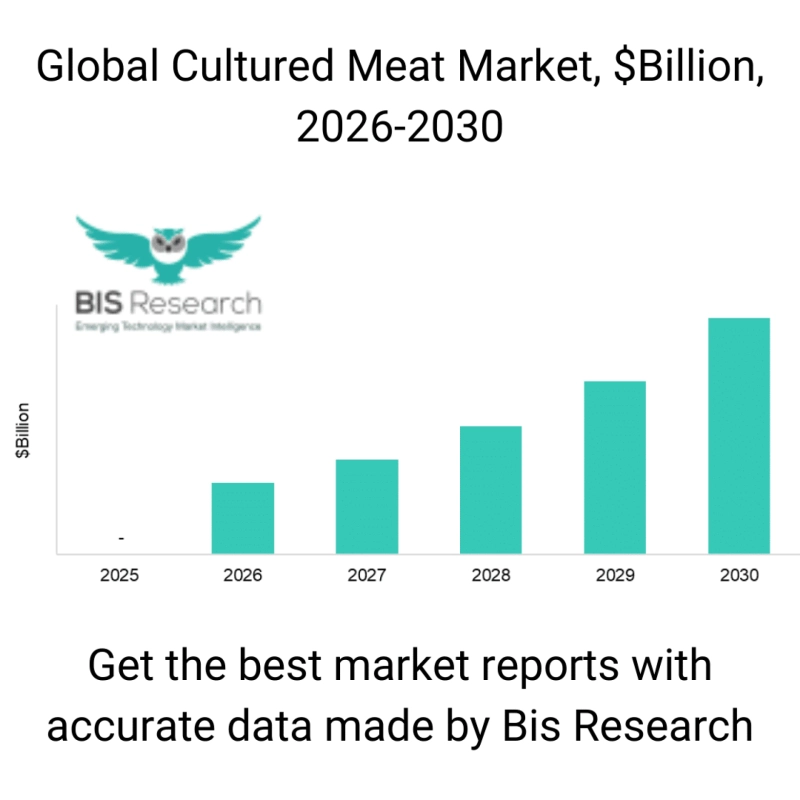According to the Food and Agriculture Organization, the world will face a critical food shortage in the foreseeable future, as demand for meat is projected to grow by more than two-thirds because of the increasing urbanization globally. In reducing the agricultural system's environmental impact, mitigating risks to public health, resolving animal welfare problems, and providing food protection, meat production through tissue culture could have enormous effects. The vital first step in finding a sustainable alternative to the processing of meat is cultivated meat.
Moreover, the traditional meat industry is also responsible for climate change and negative environmental impacts. Besides, by unregulated methane releases, livestock is also among the most critical contributors to global warming. A greenhouse gas is 20 times as strong as carbon dioxide. Via conventional means, an increase in demand for meat dramatically increases the levels of methane, carbon dioxide, and nitrous oxide, which can cause a loss of biodiversity.
Cultured meat is processed from a living animal by painlessly extracting muscle cells. To produce muscle tissue, which is the main component of the meat consumed, scientists feed and nurture the cells to multiply. Biologically, it is similar to the meat tissue that comes from an animal.
Seafood Products to Generate Highest Demand in Cultured Meat Market:
Seafood products will generate the highest revenue in the cultured meat market and are anticipated to witness the highest growth rate during the forecast period 2026-2030. This is mainly due to the high demand for fish in the countries of the Asia-Pacific region, particularly China. Significant players working on cultured fish products are present globally, which will raise demand as a range of products will be available to customers once commercialized. BlueNalu, Inc., Shiok Meats, and Finless Foods, among others, are the industry's prominent players.
China to Witness Fastest Growth in Cultured Meat Market:
China is expected to dominate the global cultured meat market in the coming years and uphold its dominance throughout the forecast period. The prime reason is increasing urbanization in the country, which, as a consequence, has positively impacted the demand for meat. China is among the most significant consumers of beef over the decades. In recent years, the demand for pork has also witnessed a massive rise. The country is finding it challenging to cope with the continuously increasing demand for meat in its economy. Despite being one of the biggest meat producers, it needs to import a significant amount of meat to fulfill consumer demand. The cultured meat technology can certainly help the country to increase its in-house production to fulfill consumer needs. Thus, for the cultured meat products, the country's development will be significant in the coming years.
The global cultured meat market has witnessed several strategic and technological developments in the past few years, undertaken by different market players to attain their initial respective market shares in this upcoming domain. Some of the strategies covered in this segment are business expansions, partnerships and collaborations, and product or prototype launched. The preferred strategy for the companies has been business expansion to strengthen their position in the global cultured meat market and tap the initial markets with clear regulatory scenarios. The cultured meat market is expected to grow at a CAGR of 34.8% during the forecast period from 2026-2030. The market is projected to reach $94.54 billion by 2030.
Cultured meat can be seen as the best alternative in order to satisfy the ever-increasing demand for meat by the rising population who are willing to display responsible eating behavior. The rise of vegetarianism and veganism is notable, but a significant amount of meat will continue to be eaten by customers worldwide thus, continuously raising the demand. This technology has the potential to address many of the critical problems associated with conventional approaches, including animal conditions, environmental impact, and public health, among others. Thus, the market has enormous potential to rise and expand in the coming years.
Key Questions Answered by This Report:
What is the expected market size of the global cultured meat market in terms of revenue and volume in 2026, and what is the expected growth rate during the forecast period 2026-2030?
What is the expected revenue to be generated by different types of cultured meat products, including beef, pork, chicken, fish, and others?
What are the meat product types expected to witness the highest growth rate?
What is the current meat market size by products in terms of volume?
What are the application area and recent developments?
What is the market size and opportunities for the cultured meat market across different regions?
What are the major driving forces expected to increase global demand for the cultured meat market during the forecast period?
What are the significant challenges expected to inhibit the growth of the global cultured meat market?
What is the present investment landscape for the cultured meat market?
What are the major patents filed in the cultured meat market?
What is the regulatory landscape in different regions for cultured meat products?
What is the impact of COVID-19 on the alternative protein industry market?
Download the sample of the cultured meat market report made by Bis Research:
0


